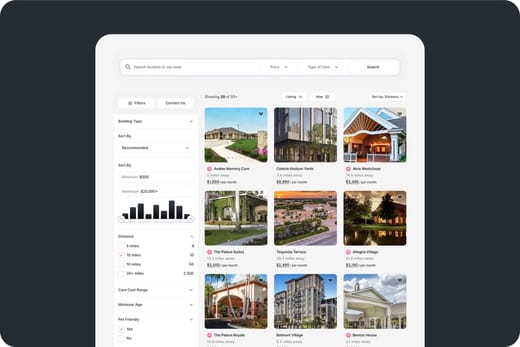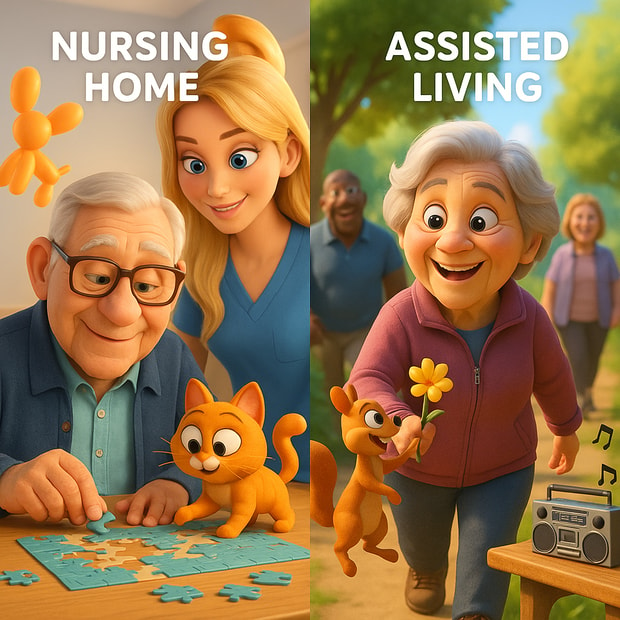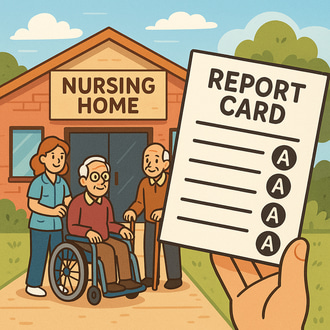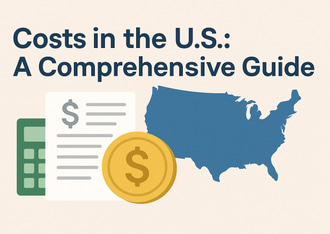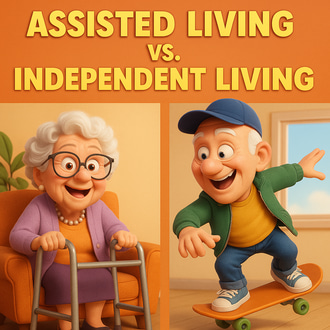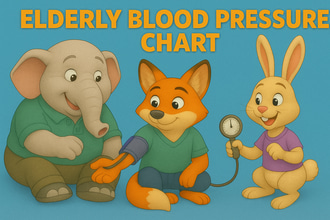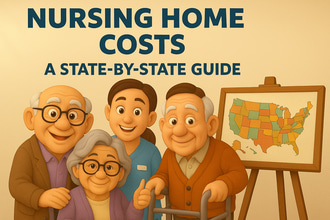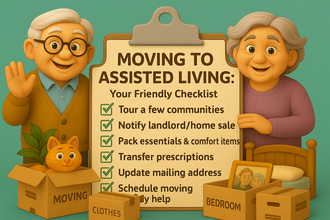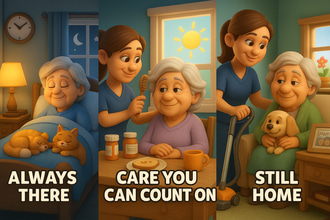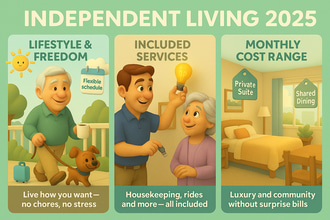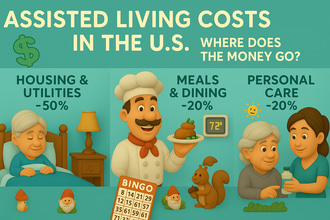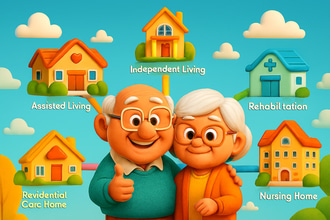Assisted living and nursing homes focus on different needs, ensuring residents receive the right care. Hence, understanding the differences between the two options is necessary to plan accordingly. Assisted living provides assistance with activities of daily living (ADLs) and maintains older adults’ independence, while nursing homes help those needing medical care for their health conditions. Referencing data from reputable sources like the Genworth Cost of Care Survey 2025, the U.S. Department of Health and Human Services, and the National Center for Assisted Living (NCAL), this article explores the key differences between assisted living and nursing homes, mainly in terms of the level of care, services offered, costs, environment, and resident profile.
Level of Care
- Assisted Living
- Catering to older adults in need of support for ADLs, including grooming, bathing, dressing, meal preparation, and medication management, but does not necessarily require medical supervision. Most assisted living communities focus on improving the well-being of older adults with physical limitations and mild cognitive conditions. Older adults get to retain a level of independence, with 24/7 assistance from caregivers, as per NCAL.
- Nursing Home
- Focuses on skilled nursing care for those with chronic illnesses, mobility issues, and complex medical needs, like advanced dementia, stroke, and ventilator support. Medical professionals, including licensed nurses and doctors, provide round-the-clock assistance according to older adults’ needs. This may include wound care, rehabilitation, and different types of therapy, as noted by the Centers for Medicare & Medicaid Services (CMS).
Services Offered
- Assisted Living
- Emphasizes help on ADLs and related activities, including housekeeping and feeding.
- Medication administration, management, and reminders.
- Recreational activities to promote social interactions and an active lifestyle, like outings, arts and crafts, and exercise programs.
- Transportation services to and from medical appointments and errands.
- Some communities offer on-call nurses or visiting nurses, though medical services are limited.
- Nursing Home
- Extensive medical care, which encompasses skilled nursing, physical and occupational therapy, and pain and symptom management.
- Specialized care for those with cognitive conditions like advanced Alzheimer’s and dementia, and behavioral needs.
- CMS notes that nursing homes provide dietary plans that accommodate older adults’ special dietary needs, and a round-the-clock team for monitoring.
- Mostly focuses on medical care, hence limiting social and recreational activities.
- Assistance with ADLs for those with limited independence.
Cost & Funding
- Assisted Living
- The national average for assisted living costs around $5,676 per month, amounting to $68,112 per year, as reported by the Genworth Cost of Care Survey 2025. Average costs vary by state, like that of California with $7,350 per month, in contrast to Georgia’s $4,000 monthly. Costs often include room, board, and services; however, memory care and other specialized services may increase it.
- Medicare and Medicaid do not cover assisted living, but Medicaid waivers may offset costs for other services. U.S. Department of Veterans Affairs notes that Veterans Benefits, through the Aid and Attendance program, can cover some expenses, alongside long-term care insurance.
- Nursing Homes
- Due to comprehensive medical services provided, nursing homes cost significantly more, with a median of $9,197 monthly or $110,360 annually for a semi-private room and $10,326 monthly or $123,912 yearly for a private room, as per Genworth 2025. Costs also vary by state, with Alaska reaching up to $31,512 monthly and Texas at $5,125 per month.
- Medicare does not fully cover nursing home costs, while Medicaid covers the costs for eligible low-income older adults. Veterans’ benefits through aid and attendance, and long-term care insurance can lessen nursing home costs.
Environment and Lifestyle
- Assisted Living
- Promotes an apartment-style living by offering private and semi-private accommodations with varying floor plans, restaurant-style dining, and cozy spaces. NCAL reported that most assisted living communities foster a home-like environment and accommodate 20 to 100 residents. For the safety of those with physical limitations, grab bars and wide hallways are provided.
- Nursing Home
- Features a more clinical and hospital-like environment with shared and private rooms, medical equipment, and more medical professionals. According to CMS, nursing homes accommodate 50 to 200 residents, focusing more on safety and less on communal spaces. Most residents have less independence due to medical needs.
Resident Profile
- Assisted Living
- Ideal for older adults aiming to retain independence, but requires assistance with ADLs or has mild cognitive conditions. Most assisted living communities accommodate those 75 to 85 years old, who can participate in activities and have autonomy. Suited for those in transition from independent living.
- Nursing Home
- Better suits older adults with comprehensive medical needs, advanced cognitive conditions, and mobility limitations. According to NIH, nursing homes often accommodate older adults 80+ who require constant care, and those recovering from strokes or surgeries.
Additional Considerations
- Staffing
- Assisted Living – teams are composed of trained caregivers who have undergone 8-16 hours of training annually, and oftentimes, nurses. NCAL reported that assisted living has a 1:15 staff-to-resident ratio.
- Nursing Homes – require a higher staff-to-resident ratio, ranging from 1:6 to 1:10, including licensed nurses and physicians.
- Regulation
- Assisted Living – the U.S. Administration on Aging notes that states have varying standards for licensing and staff training, regulating assisted living at the state level.
- Nursing Home – regulated by CMS, adheres to strict requirements for care, quality, safety, and inspections.
- Transition Options
- Assisted Living – Some assisted living communities offer memory care units, ideal for those with cognitive conditions, allowing longer stays.
- Nursing Home – Usually the final care stage, but those with terminal conditions tend to facilities that specialize in end-of-life care.
Conclusion
Choosing between assisted living and a nursing home requires an assessment of the care needed, health, and preferences. Assisted living is ideal for those with autonomy who require help with daily activities, promoting a home-like and socially engaged environment, amounting to $5,676 per month on average. In contrast, nursing homes suit those who need complex medical care, usually costing more, ranging from $9,197 to $10,326 monthly on average. Utilizing resources like Medicare.gov or the U.S. Administration on Aging (www.acl.gov), help with creating more comprehensive care plans. Consulting with healthcare providers and visiting facilities can also help assess lifestyle preferences.

